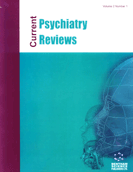Abstract
Posttraumatic stress disorder (PTSD) is a debilitating psychiatric condition that arises from exposure to a traumatic event such as combat exposure, a vehicular accident, or an act of violence. The symptom clusters of PTSD include hyperarousal and re-experiencing of the traumatic event when exposed to trauma reminders, as well as avoidance of such reminders. The fear-and anxiety-related symptoms of PTSD can be conceptualized, and subsequently modeled, as the result of fear conditioning such that the traumatic event serves as an unconditioned stimulus and the environmental cues present at the time of the trauma serve as conditioned stimuli that can ultimately elicit conditioned fear responses (i.e., clinical symptoms) long after the trauma has occurred. Many of the most successful treatments for anxiety disorders such as PTSD are based on the principles of fear extinction in which the repeated presentation of a conditioned stimulus, without noxious consequences, reduces the frequency and intensity of a conditioned response. In the current review, we discuss the most widely employed psychophysiological protocols that have been used to study fear processing in human populations, both psychiatrically healthy and with PTSD. Special emphasis is placed on how translational clinical research can inform clinical practices and vice versa.
Keywords: Anxiety, fear, posttraumatic stress disorder, psychophysiology, translation, treatment outcome, heuristics, co-morbid PTSD, neutral cue, hyperventilation, trauma-exposed, psychophysiological measures, progesterone
 5
5

